All products featured are independently chosen by us. However, SoundGuys may receive a commission on orders placed through its retail links. See our ethics statement.
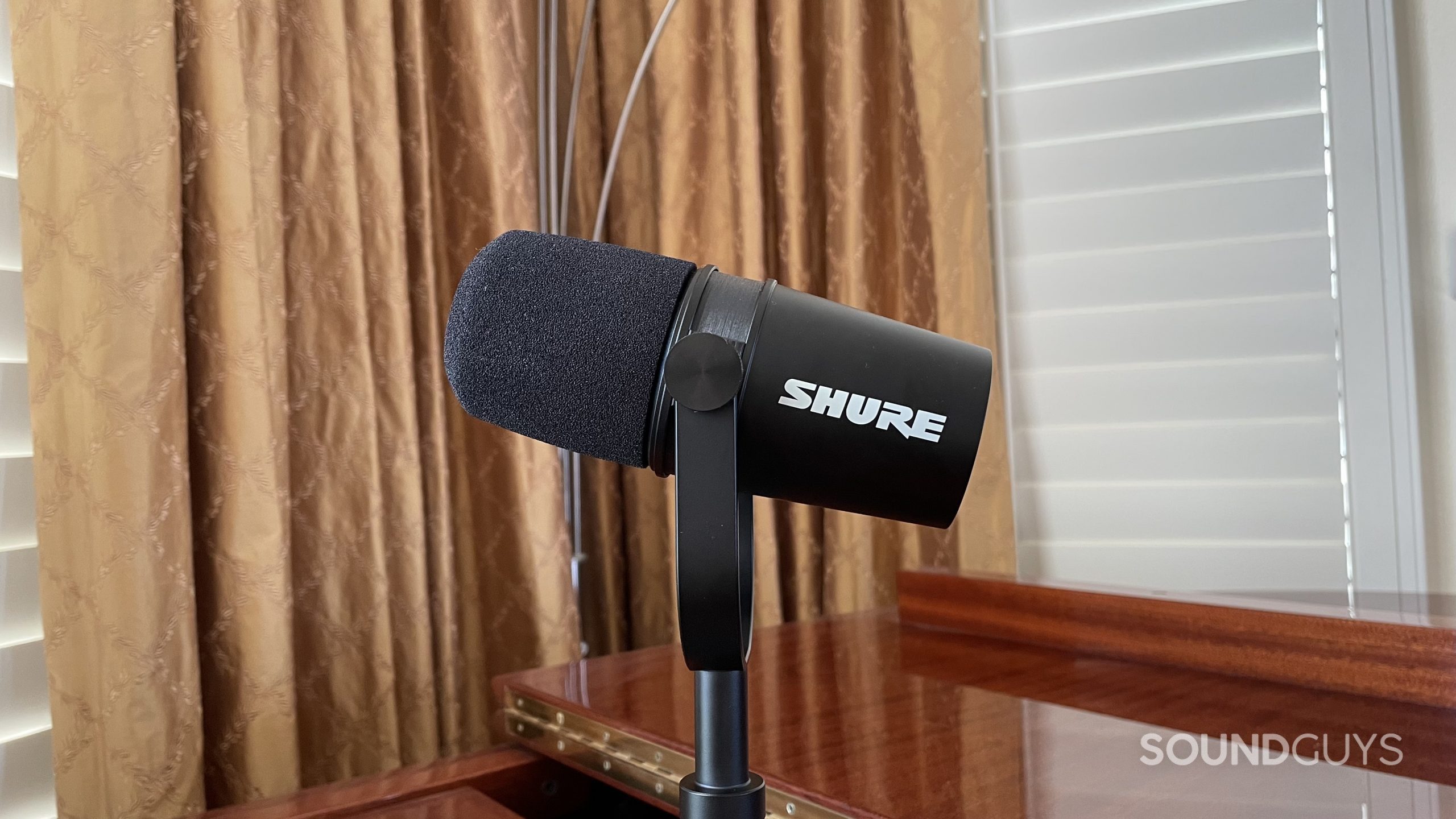
Shure MV7X review
Published onOctober 6, 2022
Shure MV7X
Shure is a pretty reliable company for both studio and live performance microphones, so none of us raised any eyebrows when the company released the latest Shure MV7X. This is dubbed as a podcasting mic, but much like its predecessors the Shure SM7b and Shure MV7, it is also suitable for vocal recordings. While Shure may be a trusted brand, there’s nothing wrong with wanting to know the nitty-gritty of a product before purchasing it, so let’s dive in.
Editor’s note: this Shure MV7X review was updated on October 6, 2022, to expand the list of buying options, add an Alternatives section, and update the formatting.
Podcasters can get the MV7X for its directional pickup pattern, and musicians can also use it to record vocals and, in a pinch, instruments. You don’t need any experience in content creation to buy this mic though. Anyone who wants a mic that’s easy to use and doesn’t include many bells and whistles will appreciate the simplicity of the Shure MV7X.
What’s it like to use the Shure MV7X?
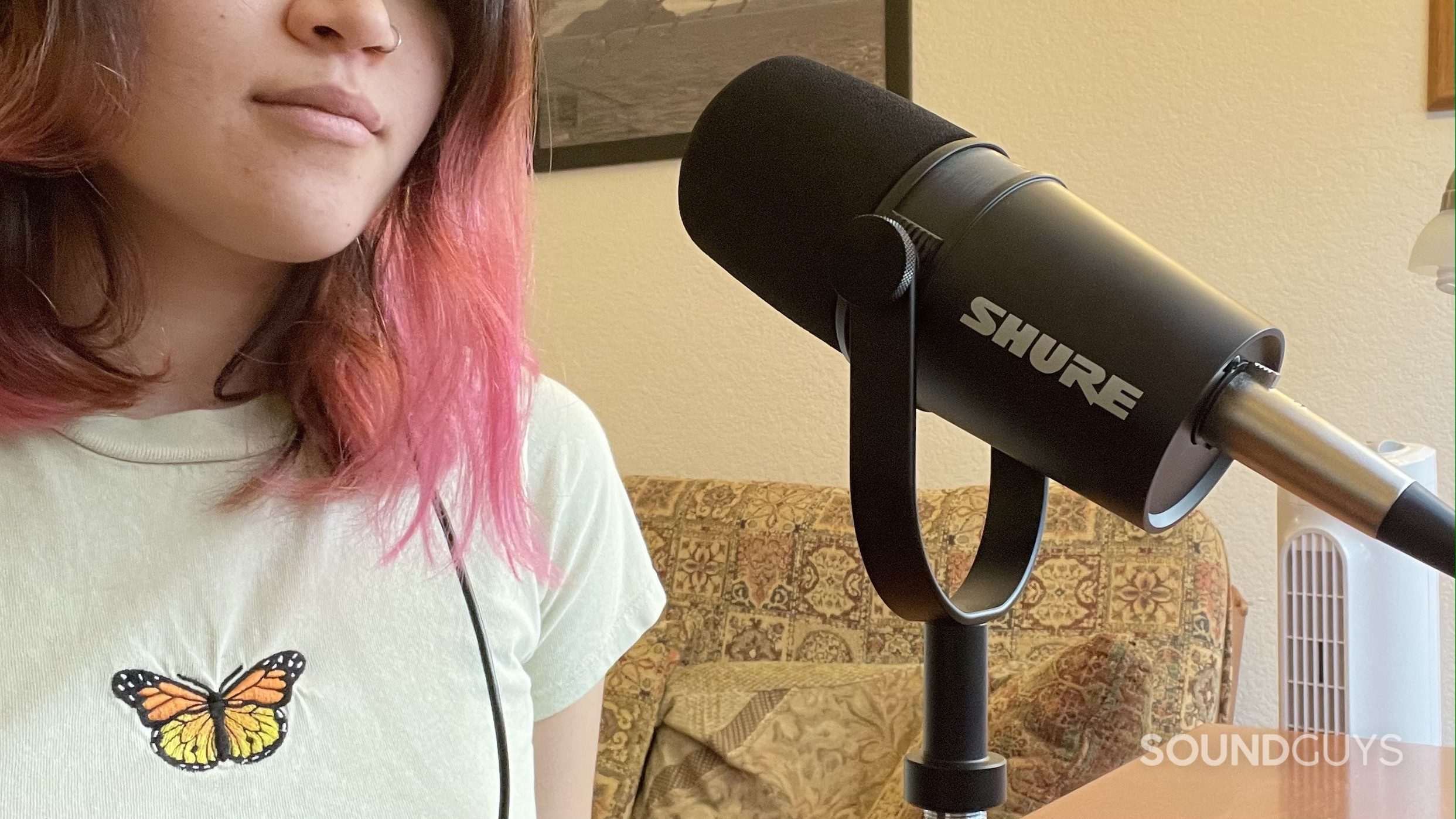
The Shure MV7X feels high quality, which makes sense considering it’s modeled after the top-tier Shure SM7b. It has a clean design and professional look. The mic is decently heavy, weighing in at 550 grams without a mic stand. You can mount it to a stage stand, desktop stand, boom arm, or pretty much any other type of stand as long as it has a 5/8-inch or 3/8-inch threaded mount. While the MV7X doesn’t come with any stands, it does come attached to a yoke mount that you can adjust by tightening and loosening the side knobs for better positioning.
The MV7X has an all-metal build including a small mic grille, covered by a removable windscreen. The grille is also removable and Shure sells replacement windscreens and grilles on its website. The MV7X also comes with a two-year warranty, which is nice for maintaining peace of mind.
The Shure MV7X is about as plug-and-play as an XLR microphone gets.
The Shure MV7X doesn’t feature a single button or switch on its chassis. This is a double-edged sword—on one hand, it makes the mic easy to use, but on the other hand, if you want to adjust the gain or mute the mic, you have to do so using your mic input’s gain control or in your digital audio workstation (DAW). The only port on the mic is an XLR output, and it doesn’t come with an XLR cable. In addition to your own cable, you’ll need an audio interface to record with the mic using your computer, though the MV7X is dynamic and therefore doesn’t require phantom power.
How does the Shure MV7X sound?
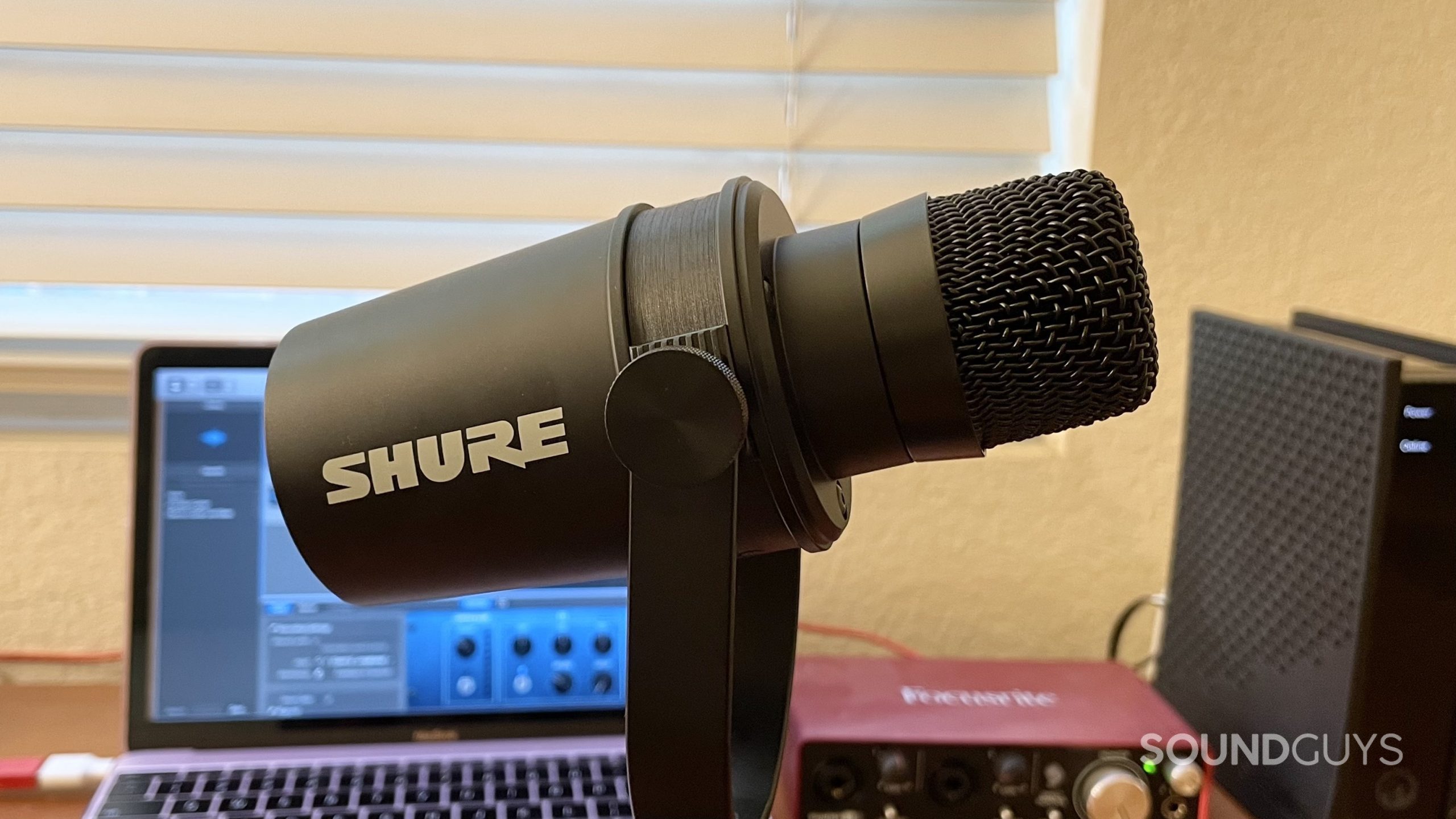
Shure’s latest vocal microphone has a cardioid pickup pattern, and this combined with its dynamic cartridge and internal shock mount make for what Shure calls Voice Isolation technology. This is pretty effective in my speaking sample—I’m typing on my laptop with a fan turned on and still my voice is coming through clearly. The sound quality is even better in more ideal recording conditions, reproducing my speaking and singing voice accurately. The mic doesn’t have any obvious issues with plosives (harsh ‘p‘ sounds), fricatives (harsh ‘f‘ sounds), or sibilance (those piercing ‘s‘ hisses and ‘sh‘ sounds), which is likely helped by the mic’s dynamic cartridge and foam windscreen.
Shure MV7X speaking sample:
Shure MV7X singing sample:
Because the MV7X is a dynamic mic, it can handle loud inputs from bombastic vocals or shredding guitar leads without distorting. When recording these louder instruments you’ll still want to lower the gain level at your interface’s mic input, but the mic is much less sensitive than a typical condenser mic.
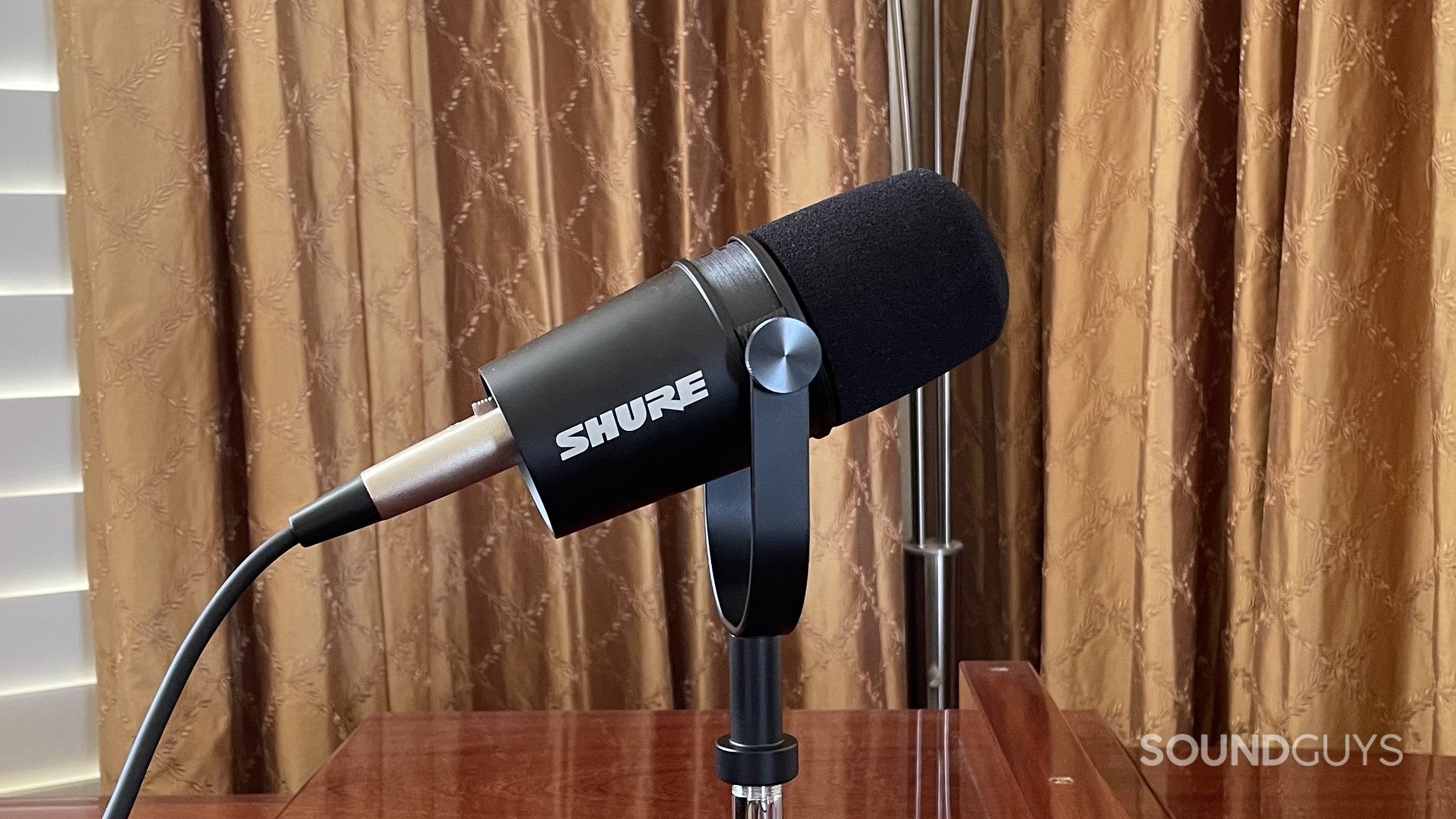
The Shure MV7X is not advertised as an instrument microphone, but with acoustic guitar, it does a good job of picking up even the subtlest sounds, like those of fingers against strings. Condenser mics are typically considered better for recording acoustic guitars, because they are better at picking up these subtleties, but the MV7X does more than fine if you can’t afford to buy a different microphone for every instrument you record. As for the electric guitar, the Shure MV7X accurately reproduces the tone of the instrument and amp, and sounds great.
Shure MV7X acoustic guitar sample:
Shure MV7X electric guitar sample:
How does the microphone sound to you?
Hold up! Something’s missing:
This section is typically where we display a frequency response chart to show you exactly where the audio output shines and where its deficiencies lie. Unfortunately, we’ve hit a technical snag in our testing. To combat this, we have an SCM-3 mic and we’ll be adding a speaker with standardized output samples to update our testing and data collection. It will take a while to reach our office in Canada, but we will update this review (and many others!) once we’re able with improved sound quality measurements and performance plots. These will be made obvious by an announcement explaining the change, and a new chart aesthetic.
Thank you for bearing with us, and we hope to see you again once we’ve sorted everything out.
Should you buy the Shure MV7X?
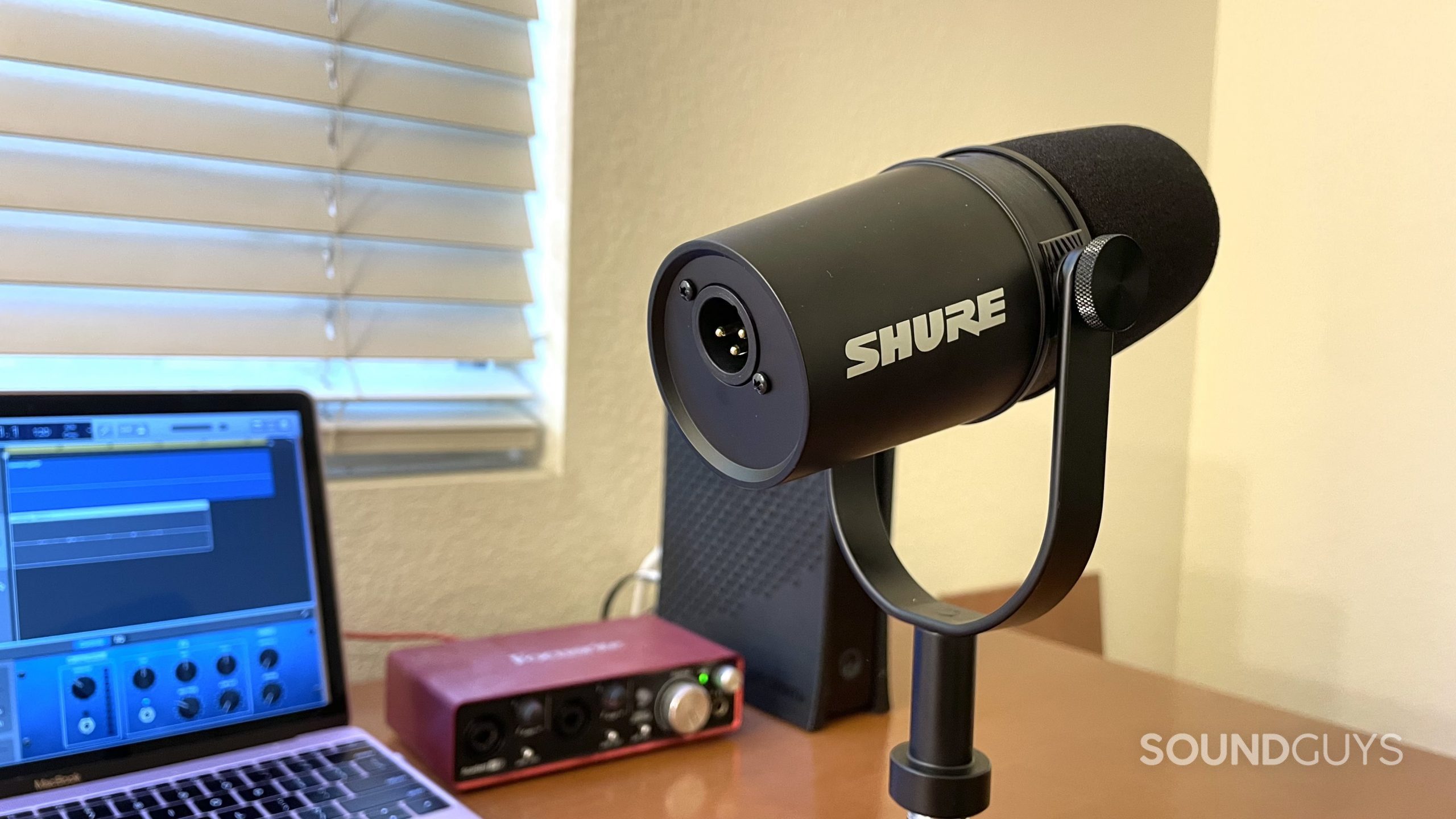
Anyone looking for a simple dynamic vocal microphone with excellent sound quality should definitely consider the Shure MV7X. It’s much more affordable than some of the other options out there, like the Shure SM7b, and still offers premium sound quality. It’s easy to use and has replaceable parts, and its sleek design is nothing to balk at. The Shure MV7X doesn’t come with extra frills and features, but this is what makes it more affordable than its predecessors. Sure, it would be nice if it at least came with a desktop stand considering it is advertised as a podcasting mic, but you can’t win them all.
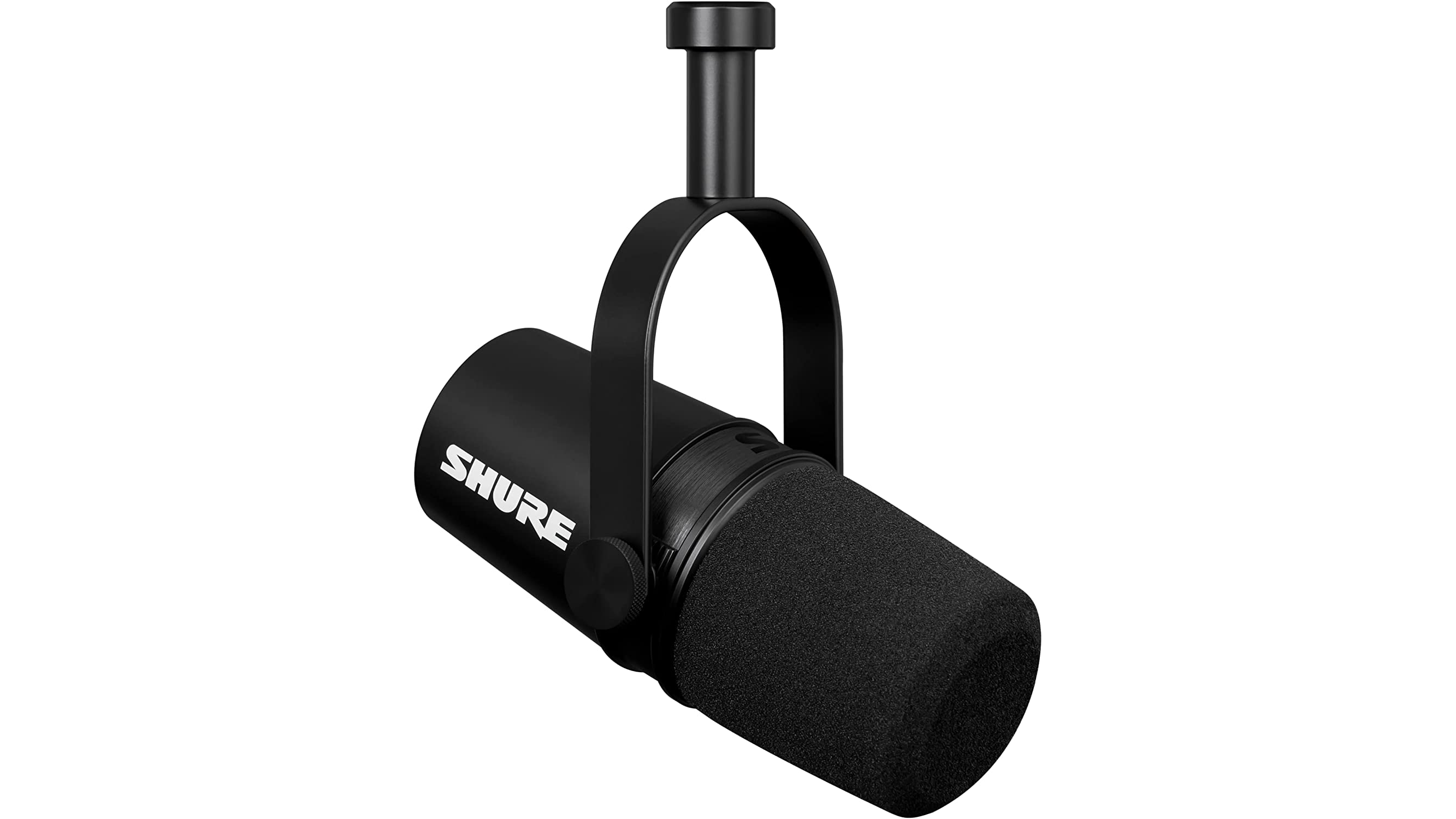
Though I praise the Shure MV7X’s sound and build quality, you can find cheaper alternatives with more features if you leave the Shure realm or go for a USB microphone rather than an XLR one. The Movo UM700 is a desktop USB microphone with four adjustable polar patterns, onboard gain adjustment and muting, and a removable windscreen. Though you won’t have that balanced signal that comes with an XLR connection, it still sounds pretty darn good.
How does the Shure MV7X compare to the Shure MV7?
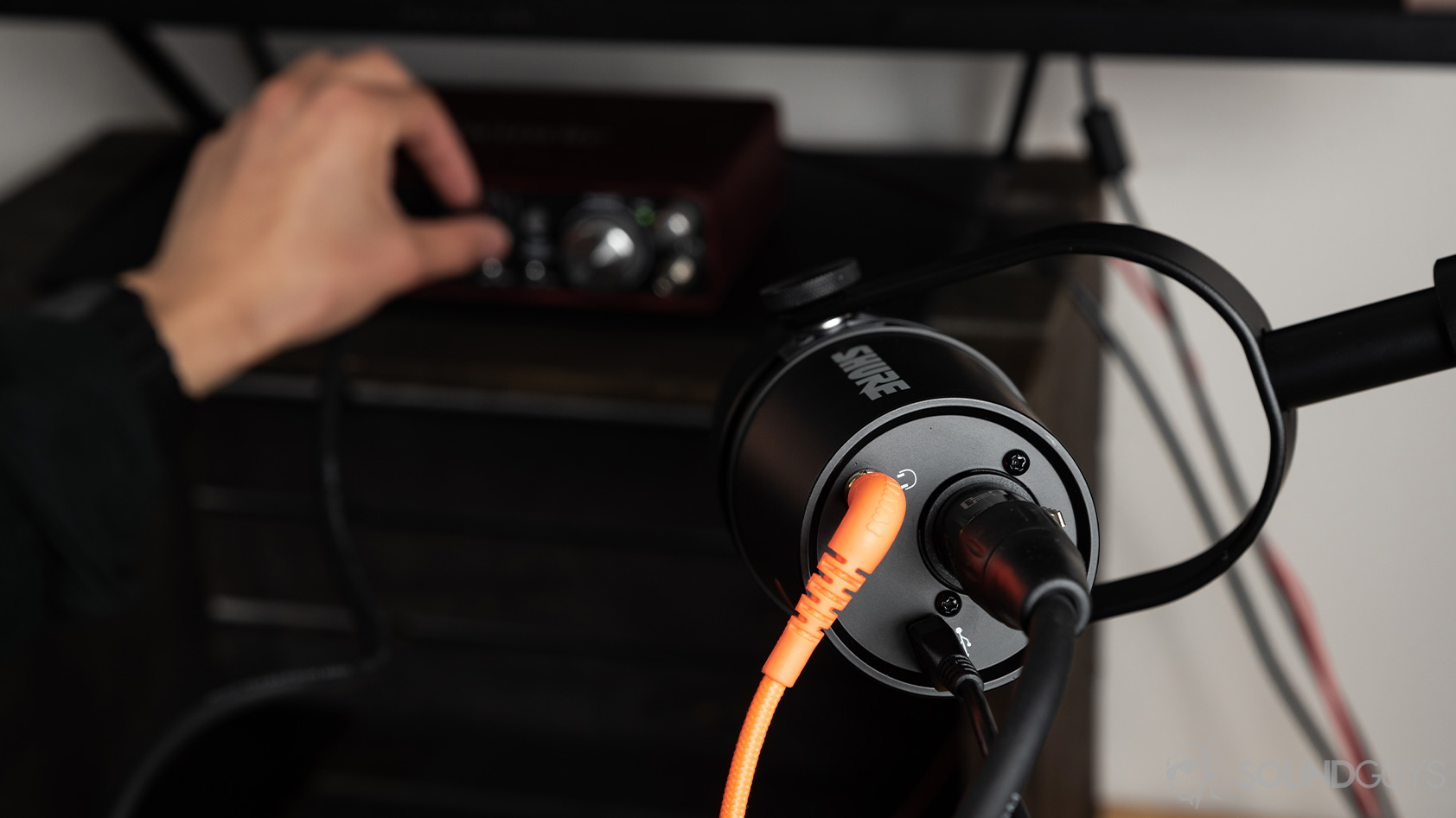
The Shure MV7X is the younger sibling of the similarly named but more versatile Shure MV7. Like the MV7X, the MV7 is a dynamic microphone, but it includes both USB and XLR outputs for plug-and-play use and creating backup files. It also has a headphone jack for direct monitoring and an onboard touch panel for controlling the mic’s gain level and quickly muting it. If you download the ShurePlus MOTIV app (which you definitely should if you buy this mic) you get even more features, like frequency response adjustment and Auto Level Mode. Like the MV7X, the Shure MV7 doesn’t come with a stand or an XLR cable, but it does come with both a microUSB to USB-A cable and a microUSB to USB-C cable.
With all these added features and versatility, the Shure MV7 is almost $100 USD more than the MV7X, but if you want more control over your recording, it’s a good buy. If you’re just looking for a sweet-sounding vocal microphone, the MV7X is still a great option.
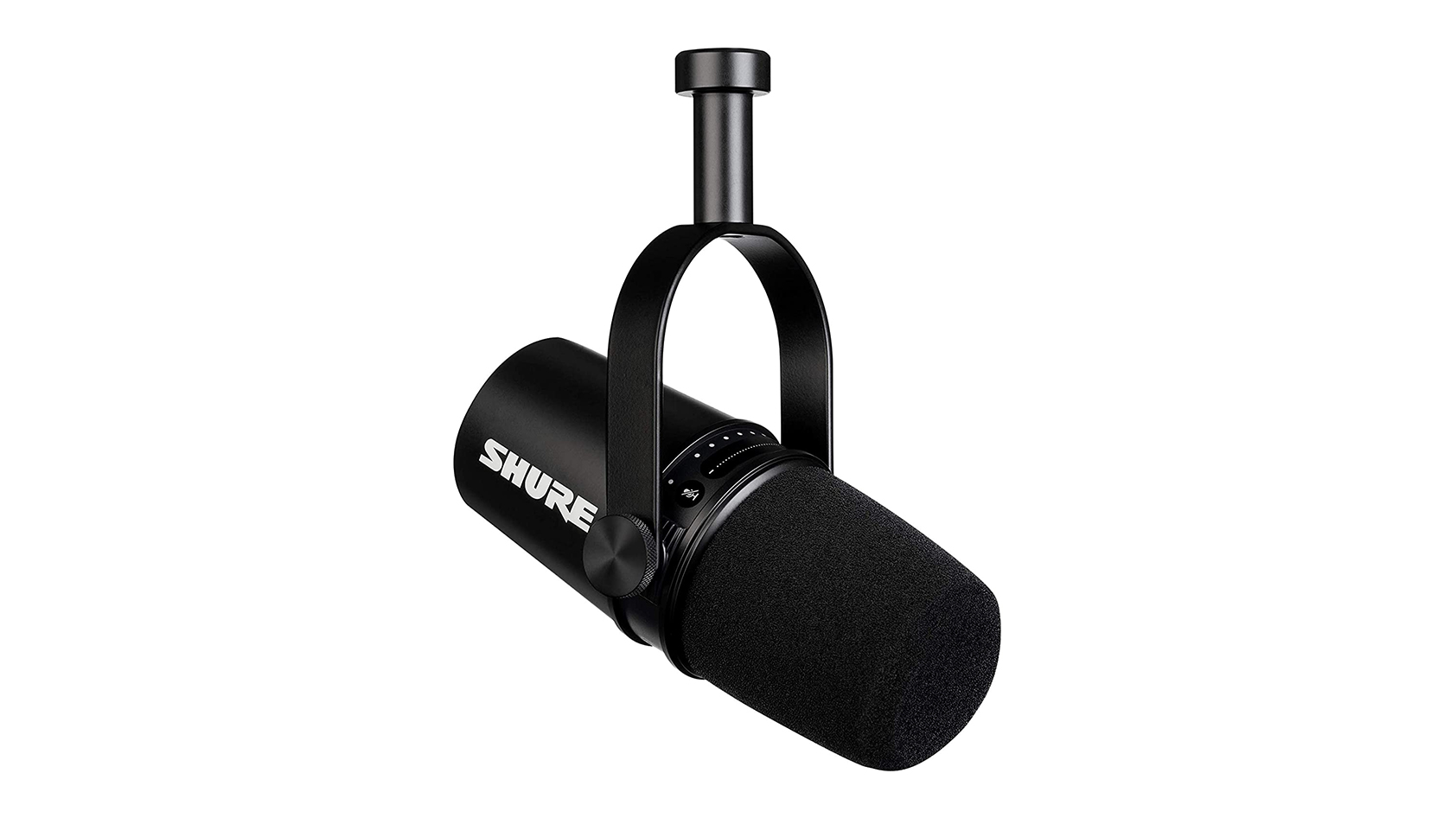
What should you get instead of the Shure MV7X?
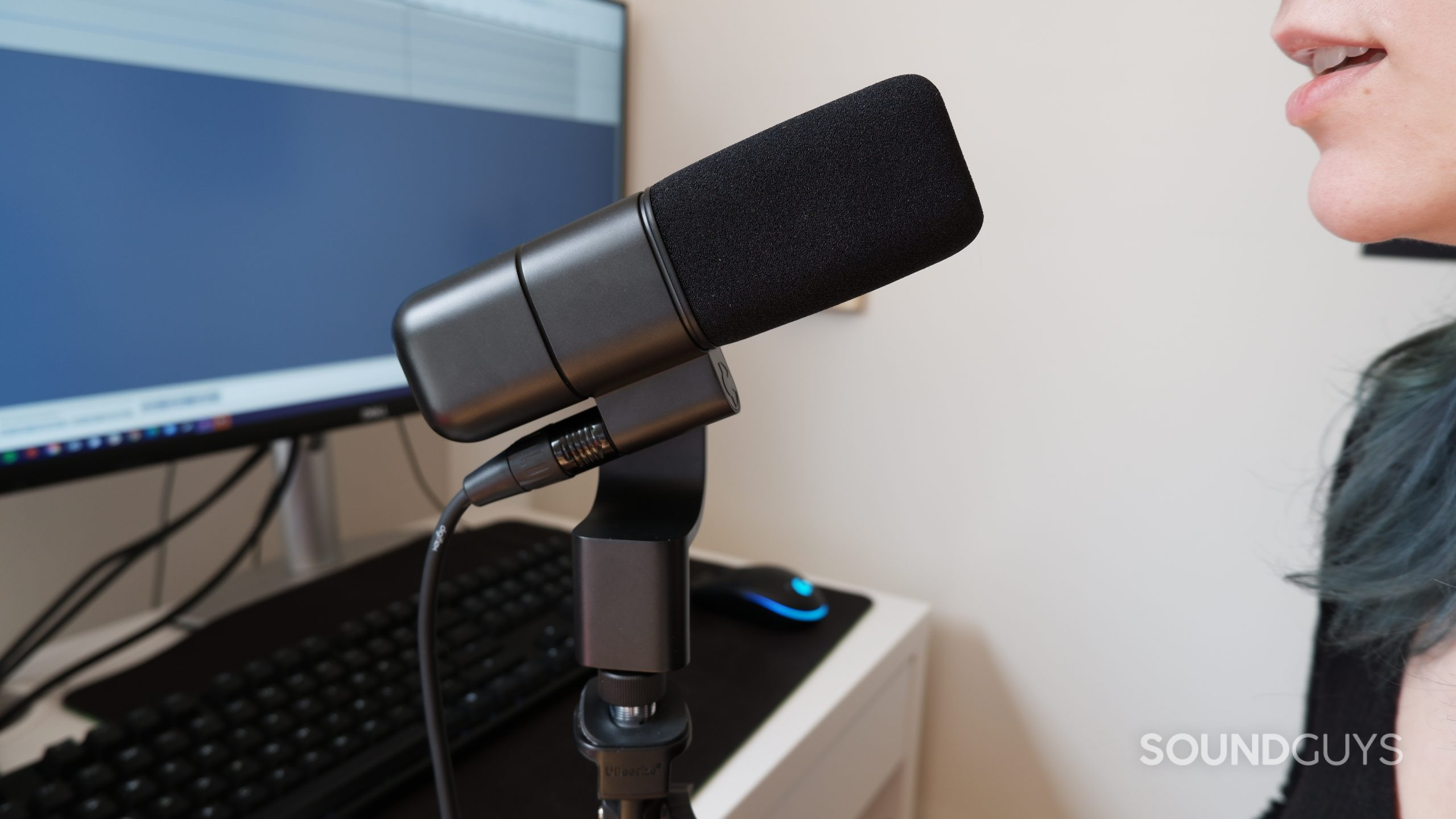
Sure, the Shure MV7X may not be for you but there is a mass of other XLR mics to choose from. The Logitech Blue Sona is one of our favorite newer options to enter the market. This microphone sounds great and produces a low amount of self-noise. Setting up the Sona is a piece of cake, and it even has onboard switches to adjust the bass and presence. The Blue Sona requires phantom power, but the integrated amp means you won’t need to add that much gain.
To stay within the Shure family and add a little Elvis flair, we recommend the Shure 55SH Series II. This dynamic XLR microphone doesn’t require phantom power but you will still need an audio interface to connect it to your computer. We like the 55SH Series II for its timeless design, sound quality, durability, and versatility.
Frequently asked questions about the Shure MV7X
No, you do not need to use a microphone preamp with this dynamic microphone.